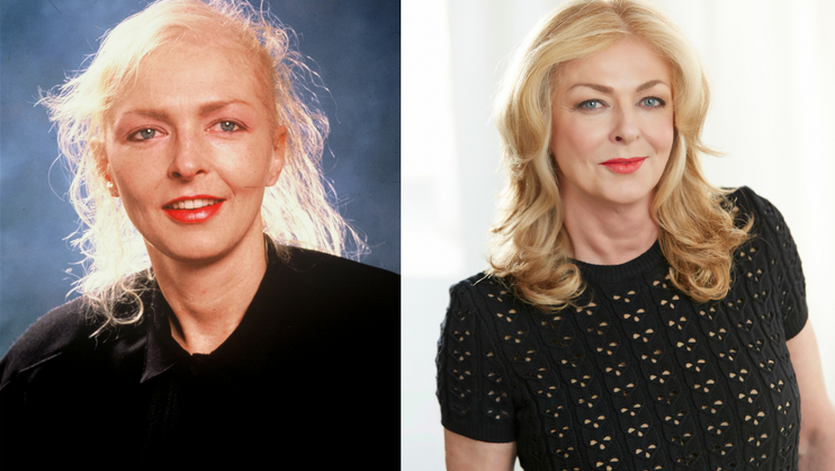In celebration of Look Good Feel Better’s 25th year in Canada, we’ve named 25 Heritage Heroes who have helped the charity make it to 25 inspiring years of helping women and teens with cancer feel like themselves again, or currently play an important role and provide a powerful voice to keep the program alive for years to come.
Each of our 25 Heritage Heroes – one for each year of our program – exemplifies the very essence of Look Good Feel Better’s mission to empower and support women with cancer.
Two-time cancer survivor Sherry Abbott has been named a Heritage Hero for her integral role in Look Good Feel Better’s 25-year legacy in Canada.
Her transformational role dates to 1989 – before the charity was founded – when she was diagnosed with advanced metastatic ovarian cancer at just 30-years-old.
At the time, there was less than 50 reported cases of her disease and the prognosis wasn’t good.
Sherry, then the director of PR for Revlon Canada, was told she had no chance of survival.
“If there is no survival rate, maybe I can be it,” Sherry said. “I challenged my doctors never to give up on me and told them, ‘Together we can make medical history!’”
And they did.
Sherry not only survived that initial diagnosis, but also survived breast cancer nearly 30 years later.
It was with that first oncology team, Dr. Denny DePetrillo, registered nurse Leslee Thompson and Dr. Barry Rosen, to name a few, that Look Good Feel Better started to take form.
DePetrillo and Thompson already recognized a need for better quality of life for women with cancer. Many of their patients struggled with how they looked and felt as women and how it affected their families, so they created the Appearance Concepts Foundation of Canada, a non-profit organization dedicated to helping women with cancer feel good about the way they look.
According to DePetrillo, a lot of attention at that time was based on the medical treatment instead of quality of life, so the concept was met with skepticism – until they met Sherry.
“I always knew I felt better when I looked my best and this was never truer than when I was in treatment and feeling anything but beautiful,” said Sherry. “A little lipstick did as much for my psyche as it did my appearance.”
Sherry took that message to the media.
Her story of survival made the cover of Chatelaine Magazine’s October 1990 issue (that same six-page cover story is often cited as the inspiration for many of Look Good Feel Better’s early supporters.)
“Sherry was an ideal patient when we saw her because she represented the young patient with cancer who had obviously multiple concerns about … quality of life,” said DePetrillo. “It was really breaking ground in making people aware that there’s other issues besides mortality.”
For Sherry, having DePetrillo and Thompson not only acknowledge, but validate those concerns “was a very powerful endorsement of their commitment to treat me as a young woman, not just a disease.”
Just as they started to get support from the healthcare community, the trio met Charles Low, then President of Cosmetics Alliance Canada (formerly the Canadian Cosmetics, Toiletry & Fragrance Association). Low connected them with Look Good Feel Better in the U.S., which had been piloting workshops in Canada. With both groups sharing a similar goal, they joined forces.
Sherry sat on the operations committee and helped get the program off the ground.
By September 1992, the first-ever Look Good Feel Better workshop was held at Toronto’s Princess Margaret Cancer Centre.
Sherry continued to work at Revlon Canada, but stayed involved with Look Good Feel Better on a volunteer basis, until she became Regional Manager for the charity’s Ontario chapter in 2003 and then Executive Director in 2006 – a position she held for 10 years.
Today, Sherry is VP Business Development at Pinnacle Cosmetics, but continues to support Look Good Feel Better as its Global Ambassador, representing the charity on an international level.
While Sherry played an instrumental role, she humbly credits her oncology team, fellow patients, Cosmetics Alliance Canada and the cosmetic industry for bringing Look Good Feel Better to Canada.
“They truly were the catalyst behind it,” she said. “I just happened to be the person that was impacted and helped identify what the industry had to offer.”
“It was the cosmetic industry at large who supported me through my treatment and recovery – it gave me hope and helped restore my confidence, which is why Look Good Feel Better is a cause I’ll always support.”




